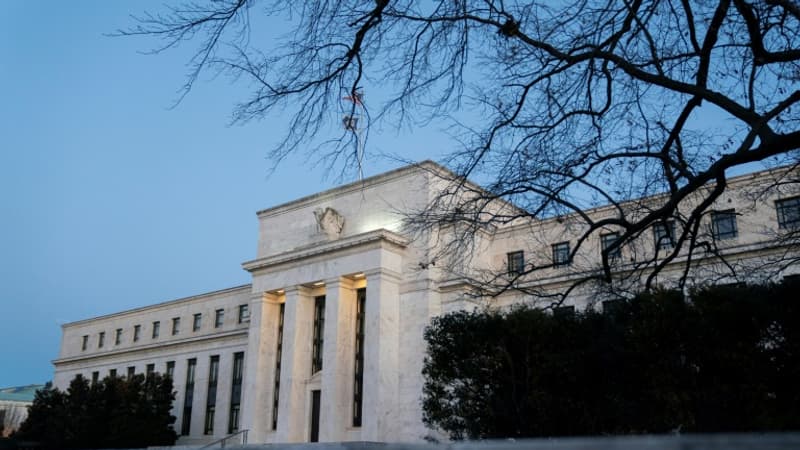The US Federal Reserve (Fed) announced this Wednesday that it had lowered its main rates for the third consecutive time by 25 basis points, placing them in a range between 4.25% and 4.50%, in line with the expectations of the markets.
A decision that, however, was not unanimous among the members of the institution’s Monetary Policy Committee (FOMC), since one of its members, Beth Hammack, spoke out against a new rate reduction. Federal Reserve Chairman Jerome Powell will have the opportunity to explain the Committee’s decision during his press conference, which begins at 2:30 p.m. (7:30 p.m. GMT), as markets reflect on the desirability of such a decline. , to the extent that inflation has increased. rose again in the last two months in the United States, after having followed an encouraging trajectory towards the 2% annual objective set by the Federal Reserve.
Two reductions planned for 2025
The progression of the CPI consumer price index, based on which pensions are indexed, rose in November to 2.7% in one year. The PCE inflation index, which the Federal Reserve wants to reduce to 2%, will be published on December 20. On the producer side, prices even rose in November to their highest level in almost two years, due in particular to the consequences of the bird flu, according to the IPP index. “We can doubt the benefit of a new reduction (in interest rates) because the economy is doing well, it does not seem to need a stimulus,” said Nathan Sheets, an economist at Citi, before the meeting, interviewed by AFP. But the Federal Reserve now plans to act more slowly, considering just two rate cuts by 2025, of 25 basis points each.
And the Federal Reserve’s forecasts appear to support analysts’ questions: In fact, the central bank does not expect inflation to return to its 2% target before the end of 2026, and has even significantly revised its 2025 inflation forecast. , which it now expects to be around 2.5%, while it expected to reduce it to 2.1% during its previous forecast, in September.
A persistent inflation that, however, should not weigh on economic activity, since the Federal Reserve now expects growth of 2.1% by 2025 (compared to the 2% forecast three months earlier), with an unemployment rate that remains low and almost stable, at 4.3%. only 0.1 percentage points more than this year.
Uncertainty ahead
Jerome Powell recently estimated that the Federal Reserve “could afford to be a little more cautious” due to the strength of economic activity. And one of the governors, Michelle Bowman, considered that the risks linked to inflation were “more significant” than those linked to unemployment. The governor has also estimated on several occasions that the neutral rate, that is, the one that does not influence, support or slow down economic activity, could be higher than initially expected and perhaps even close to the current level.
But it will also depend on the economic policy implemented by President-elect Donald Trump, who will return to the White House on January 20. However, between the promised regulatory deregulation, the desired expulsion of a part of the immigrants who entered the territory illegally, tax cuts or even the increase in customs duties, the effects on the economy could be important and difficult to assess. predict. They are standing.
Federal Reserve leaders “are not here to prejudge the effects of these policies, but they will have to take into account the possible effects. This administration’s proposals can cause a shock to both supply and demand and there is a whole range of possible consequences of these shocks,” judges Mr. Sheets. According to a survey conducted by recruiting company Resume Templates of 500 US companies, 82% of them plan to increase their prices if new customs duties are actually established.
Donald Trump has already announced 25% customs tariffs against his neighbors Canada and Mexico, which could drive up prices for the American consumer.
Source: BFM TV


